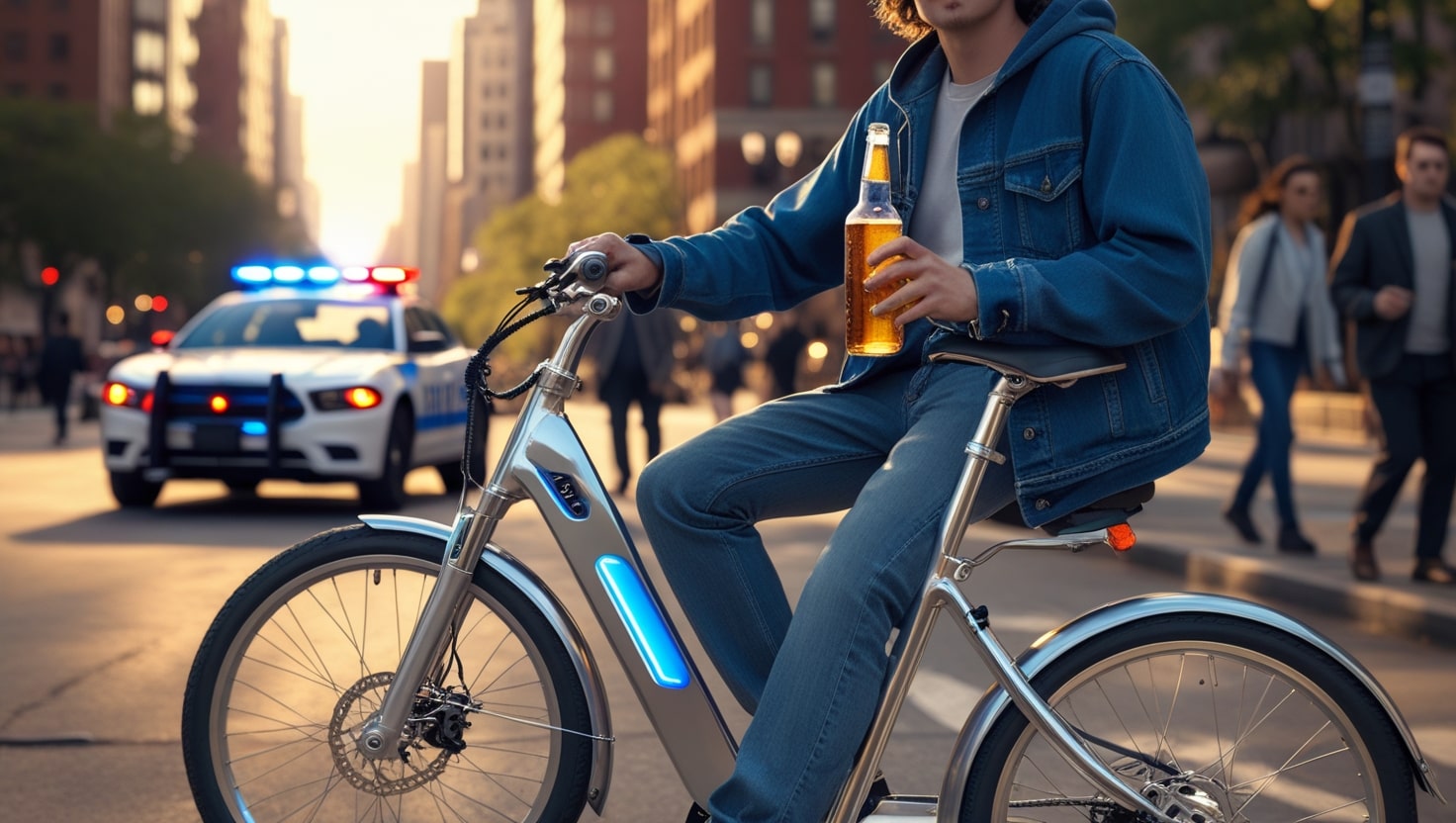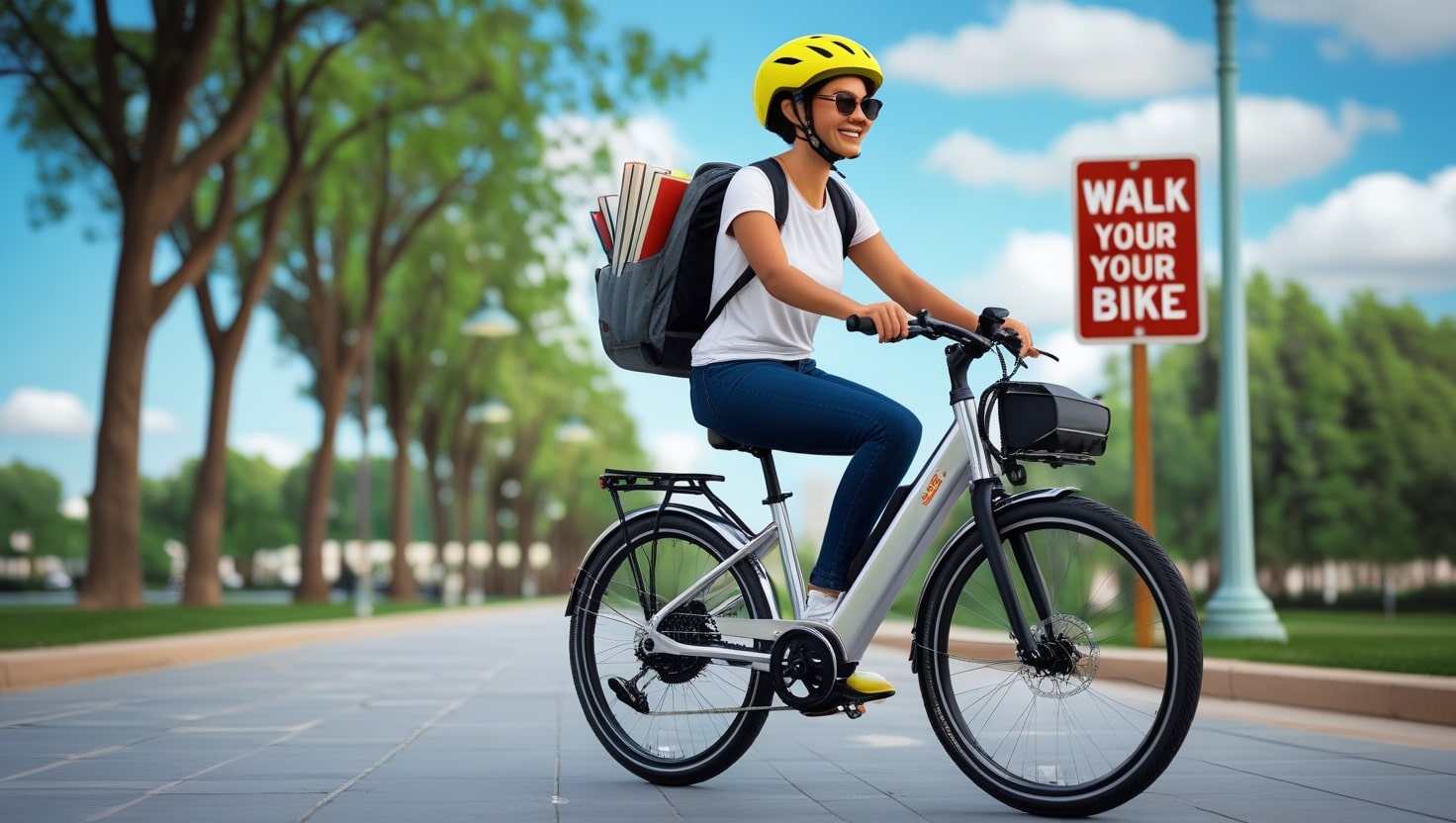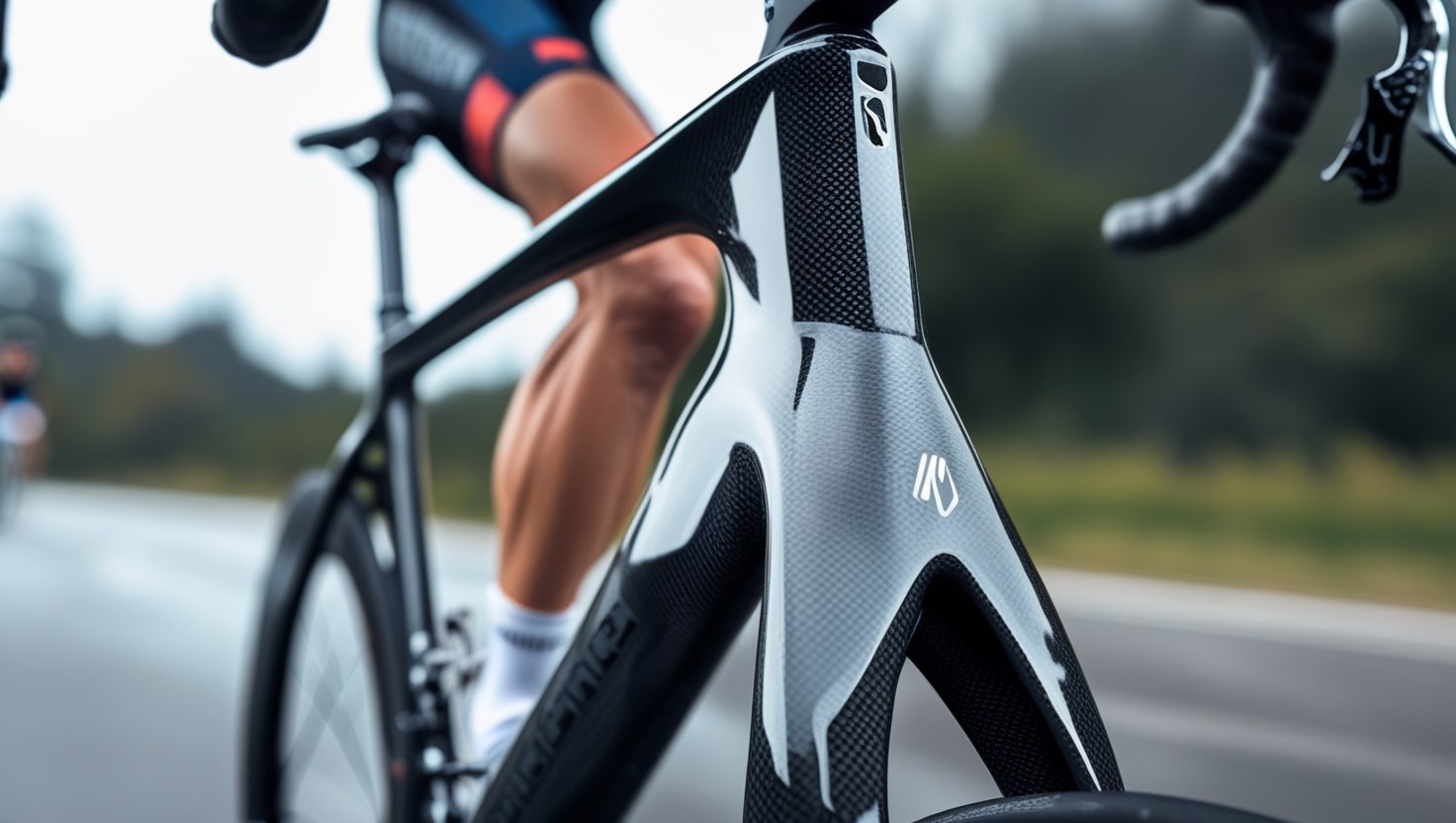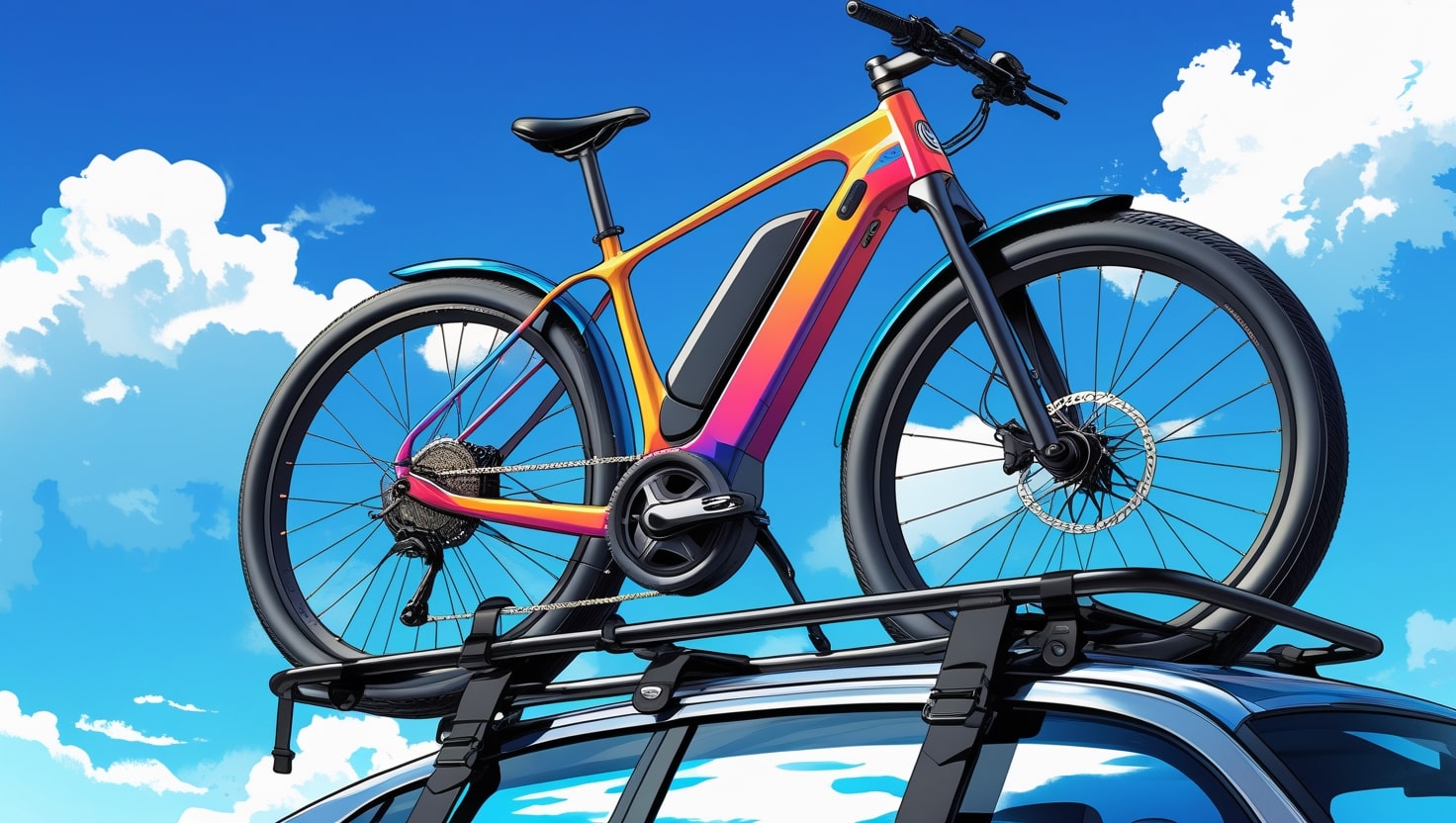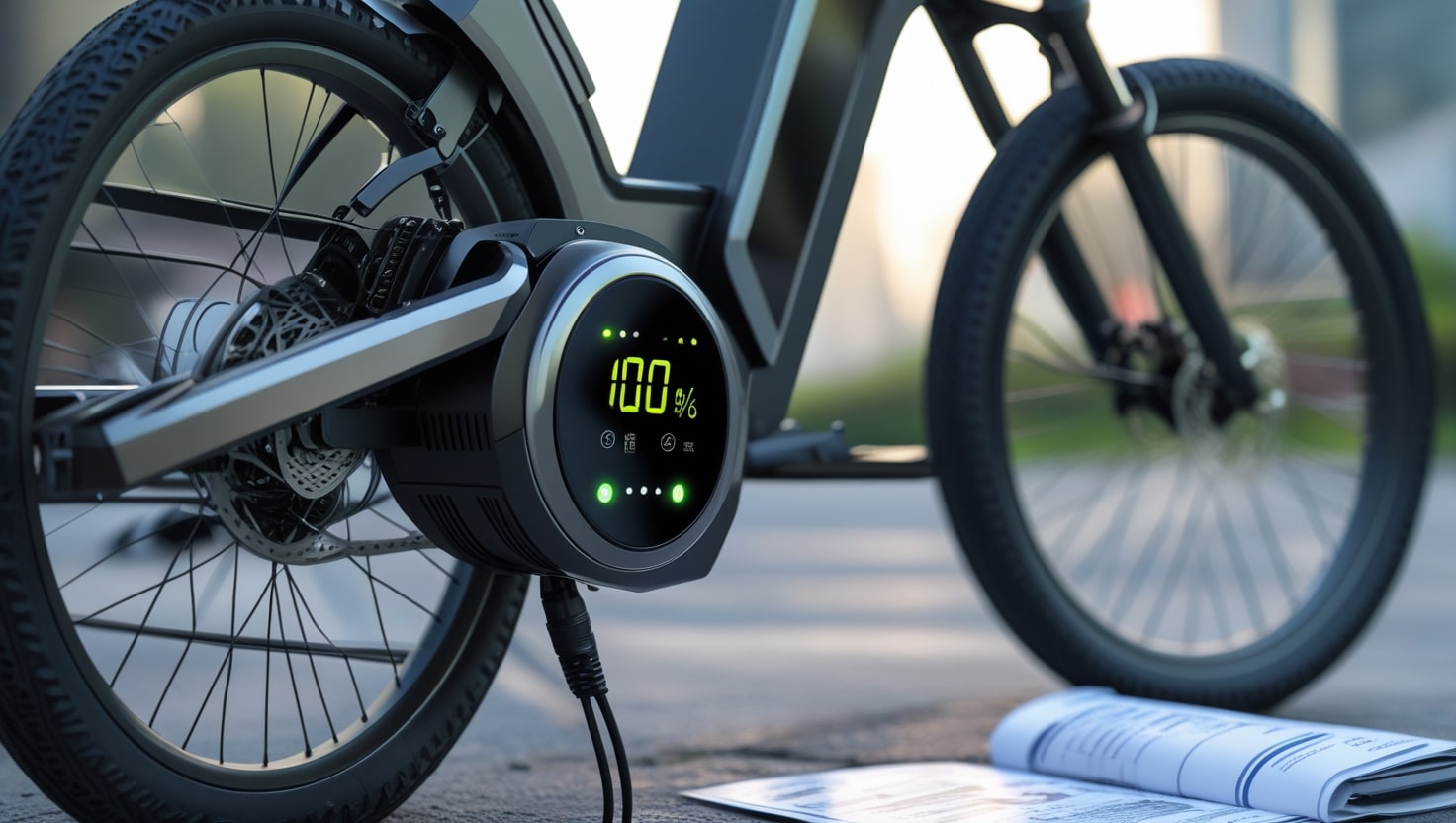If you love MTB trails as much as I do, you’ve probably thought about capturing those epic adventures. Whether you’re hitting a local mountain or planning a weekend bike trip, having the best action camera for mountain biking changes the way you experience your rides. These little cameras let you record all the action and share your journey with friends and family, or just keep it for your own memories. The market is full of amazing options, and with brands like GoPro, DJI, and Insta360, the camera tech keeps getting better.
What makes these action cameras so popular is their cool features—from crisp video, clear stills, and smooth footage to easy edits that let users quickly create awesome content. Whether you’re riding solo or with others, it adds a whole new layer of fun—and maybe even a little bragging. Many riders also use footage to learn a trail better by replaying rides on YouTube, or for coaches to give helpful correction. Seeing your posture and cornering in motion can give real evidence to improve your technical skills, way beyond what spoken advice offers.
When choosing the right option for your biking needs, it helps to know what to look for. That’s where our buying guide and tips come in. Whether you’re new to filming or just upgrading, we’ve got you covered while making sure you don’t miss your camera rights—like easy access, durability, and control.
best action camera for mountain biking
1. Best MTB action camera overall

GoPro Hero12 Black
Specifications
Weight: 153g
Resolution: 5.3K, 60fps, 4K, 120fps, 16:9
Battery life in general: 1.5 hrs at 5.3 K30, 2.5 hrs at 1080p
Today's Best Deals
Reasons to buy
Improved battery run time for longer trail sessions
Bluetooth audio support makes it easy to connect mics
Wide 156° field of view in tall 8:7 format captures more of the trail
Additional Max Lens Mod 2.0 delivers an ultra-wide 177° angle for immersive shots
HyperSmooth 6.0 with AutoBoost and horizon lock keeps your footage stable
Crisp 27MP photo resolution perfect for grabbing stills from action clips
Reasons to avoid
Very similar in features to the cheaper Hero11, which may offer better value
Low-light footage remains a weak point, especially in dense forest or late evening rides
The GoPro Hero12 Black takes everything that worked well in its predecessor, the Hero11, and makes it even better for serious MTB riders. It’s a powerful, versatile action camera built to handle rugged mountain trails while giving you incredibly smooth and sharp footage. Thanks to HyperSmooth 6.0, AutoBoost, and Leveling, the stabilization adjusts on the go, keeping your shots clean no matter how rough the ride gets. The sensor now captures crisp 27MP stills and supports 5.3K video in an 8:7 aspect-ratio, letting you shoot once and crop later in 1:1, 16:9, or 9:16 formats without losing quality.
One of my favorite updates is how easy editing has become using the Quik app. You can export clean vertical clips for socials or wide cuts for YouTube, all from one master shot. The HDR mode and GP-Log recording bring out more detail in bright and tricky environments, while the extended dynamic range helps preserve shadows and highlights better than ever. With frame rates like 60fps at 4K, 120 fps at 2.7K, and even 240fps at lower resolutions, it’s built to handle fast movement like cornering, jumping, or speeding down a line. If you’re looking for the best all-rounder, this one earns my full recommendation. It’s stacked with pro-level features, but still made with everyday bike riders in mind.
Related: Where Can I Sell My Bike for Cash?
2. Best value MTB action camera

GoPro Hero11 Black
Specifications
Weight: 154g
Resolution: 5.3K, 4K, 2.7K, 60fps, 120fps, 240fps, 5.3K/30fps
Battery life in general: 80 minutes (at 5.3K/30fps, claimed), excellent general battery life
Today's Best Deals
Reasons to buy
Shoots in 8:7 ratio, giving flexible options for both wide and vertical content
HyperSmooth 5.0 with AutoBoost and horizon lock makes bumpy footage look steady
A wider field of vision is provided by the HyperView digital lens for close-up trail photography.
Improved 27Mp photo resolution captures sharp details from every ride
Comes with an Enduro battery that lasts longer in cold conditions
Reasons to avoid
The Hero Mini is better suited for tight setups or dedicated POV shots
Audio performance hasn’t improved compared to older versions
Low-light capture still lags behind other cameras in this range
The GoPro Hero11 Black might not be the newest model on the trail, but it still holds its place as one of the best action cameras for mountain biking, especially if you’re looking for excellent features at a better price. While the Hero12 may be its successor, the Hero11 offers nearly identical stabilization with HyperSmooth 5.0 and delivers crisp footage in a flexible 8:7 ratio. This makes it easy to crop your video into different formats like 1:1 for Instagram, 9:16 for TikTok, or 16:9 for YouTube—all without losing quality. I’ve edited many clips in these formats, and the transitions feel smooth and natural.
What really stands out is the big 1/1/9-inch sensor, which boosts both photo and image resolution. It pairs well with the digital lens like Hyperview, which gives you a wide 141-degree FOV for immersive downhill rides. The built-in Horizon Lock up to 2.7K means your tilt won’t ruin a good shot, and the software takes care of the rest. The included Enduro battery is a game-changer for cold-weather performance, adding more life to your camera on longer rides. Even though you won’t need extra hardware, the sibling-like similarities with the Hero12 make the Hero11 a smart upgrade if you’re just stepping into GoPro territory.
3. Best MTB action camera for 360-degree footage

Insta360 X4
Specifications
Weight: 204g
Resolution: 8K, 5.7K, 5.7K/30fps, 4K, 30fps, 60fps, single-lens
Battery life: 81 minutes (claimed) life
Today's Best Deals
Reasons to buy
Stunning colors and sharp image quality bring trails to life
360 capture with flexible reframing and dynamic angles gives endless options
Easy and smooth editing in post makes storytelling effortless
Powerful stabilization keeps footage steady through rough terrain
Clear sound capture and decent battery life for full-ride coverage
Reasons to avoid
Slightly heavier than the older X3, which could affect helmet or chest mounting
Quality drops in low light or when footage is zoomed in
The editing process can feel disjointed and time-consuming compared to simpler setups
If you’re looking for a powerful action camera that does more than just record your ride, the Insta360 X4 is a game-changer. Known as the most advanced 360 model from the brand, the X4 captures every angle with impressive 8K footage and lets you reframe your shots later with ease. Whether you’re filming from your helmet or a handlebar mount, the huge 170-degree POV with Maxview mode delivers wide, dynamic scenes. You can also record in 4K/30fps or 2.7K/60fps, and the massive 72MP stills are perfect for freezing key moments. I’ve personally used the X4 on downhill trails, and the stabilization keeps everything smooth, even through sharp drops and bumpy lines.
What really sets it apart is the flexibility during editing. With the Insta360 app, you can reframe for vertical or horizontal formats, add cool effects, or clean up transitions—all from your smartphone or desktop. The big battery not only improves overall life, but also adds weight, which you might notice on longer sessions. Still, if you’re into creative content and don’t mind managing some extra memory, the X4 delivers on all fronts. This high-quality tool gives you multiple perspectives and the freedom to tell your MTB story however you want.
4. Best MTB action camera for POV footage
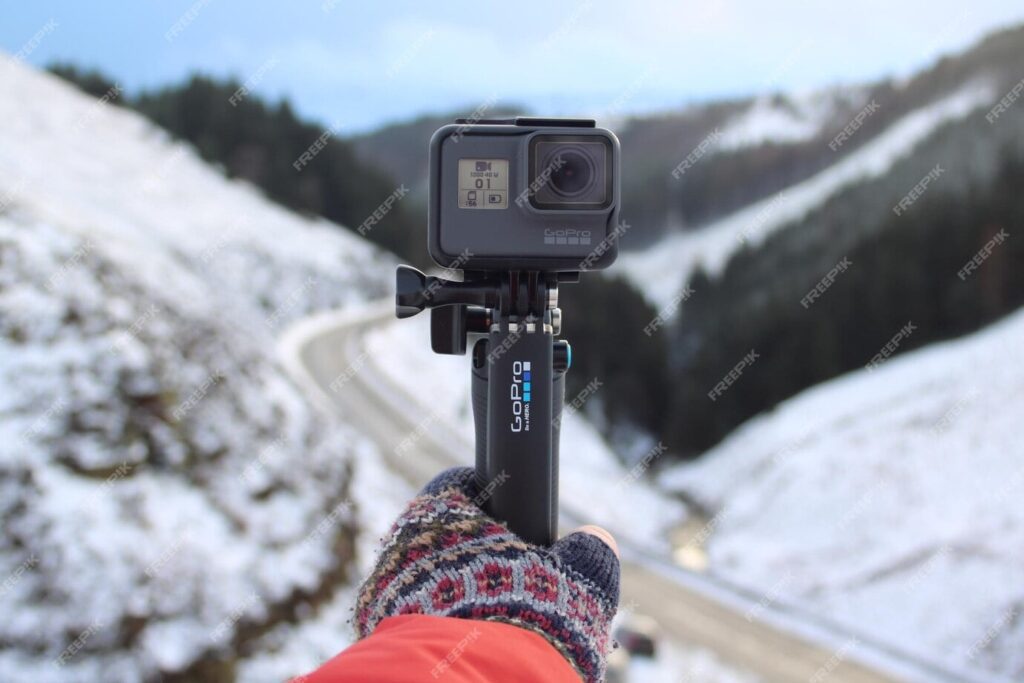
GoPro Hero11 Black Mini
Specifications
Weight: 133g
Resolution: 5.3K, 4K, 2.7K, 60fps, 120fps, 240fps, 5.3K/30fps
Battery life: 80 mins (claimed), reliable battery life for trail sessions
Today's Best Deals
Reasons to buy
Compact and lightweight design makes it easy to mount and carry
Delivers high-quality video performance even in rough trail conditions
Two mounting points offer more flexibility for setup on helmets or frames
Fully waterproof up to 33ft, great for wet and muddy trails
All-in-one package ideal for riders who want power in a small form
Reasons to avoid
No screen, which means you’ll need your phone to preview shots or settings
Built-in battery can’t be swapped out on longer rides
No photo mode, the camera supports video recording only
The GoPro Hero11 Black Mini is a welcome return for many riders who missed the ultra-mountable Session line. With a compact build and weighing just 133g, it’s designed for easy mounting and seamless wear, especially under a helmet. The Mini is slightly larger than the Session, measuring 52.4 x 38 x 51.2mm, yet it still feels far lighter and less bulky than a standard action camera. Despite its small size, it delivers the same great video quality and stabilization as the larger Hero11 Black, thanks to its powerful processor, advanced sensor, and familiar settings.
One of the best things about the Mini is how much it simplifies your ride filming setup. With dual mounting points—including one on the rear—you can mount it securely even in tight spaces. It’s fully waterproof up to 33ft, making it perfect for wet or muddy trails. While there’s no touchscreen display, you still get a small black-and-white screen showing basic details like battery life, recording time, and active modes. You’ll need to use the app on your smartphone for live view and framing your shot, which actually gives you more flexibility when setting up creative POV angles.
The trade-off for this stripped-down design is that there’s no photo mode—it’s focused on video only. But for those who mainly shoot fast-paced footage and want less to fuss with, it’s ideal. It’s a rugged tool made for action, and though simplified, it still offers all the essentials serious riders need on the trail.
5. Best MTB action camera for modular design

Insta360 One R Twin Edition
Specifications
Weight: 125g, 130.5g (depending on configuration)
Resolution: 5.7K, 4K, 2.7K, 100fps, 60fps, 30fps, 5.3K/30fps, wide angle, capture, mode
Battery life: 65 minutes (claimed), strong battery life for short-to-medium trail sessions
Today's Best Deals
Reasons to buy
Adaptable design thanks to its modular build
Seamless system that supports different mounts and lenses
High-quality video even in fast motion or changing light
Strong stabilization keeps footage smooth on bumpy trails
Impressive capabilities for both pros and beginners
Reasons to avoid
Fiddly lens changes can slow you down when switching setups
Small screen makes navigation and framing a bit tricky
Battery life is decent, but could be longer for all-day rides
The Insta360 One R Twin Edition is easily one of the most adaptive picks among the best action cameras for mountain biking. What makes it stand out is its modular design, giving users the freedom to swap out lenses depending on their shooting requirements. The Twin Edition includes a 4K wide-angle lens, a 5.7K 360 module, and a premium 5.3K Leica-engineered 1-inch sensor unit—making it a true multitool for riders who want flexibility. Whether you’re riding solo or capturing group trail sessions, it delivers consistent video quality with punchy performance, even in mixed terrain and light.
Beyond visuals, the One R shines in its features, especially when it comes to audio. It has support for wireless mic setups like RØDE Wireless GO, and even pairs with Apple AirPods and your Apple Watch as a remote control. Add to that its compatibility with various cases, mounts, and extended batteries, and you get a camera built not just for epic rides, but for full-day filming. If you’re someone who values control, adaptability, and high-end tools, this setup offers more options than most standard action cams.
Related: Delaware eBike Laws
6. Best older GoPro MTB action camera
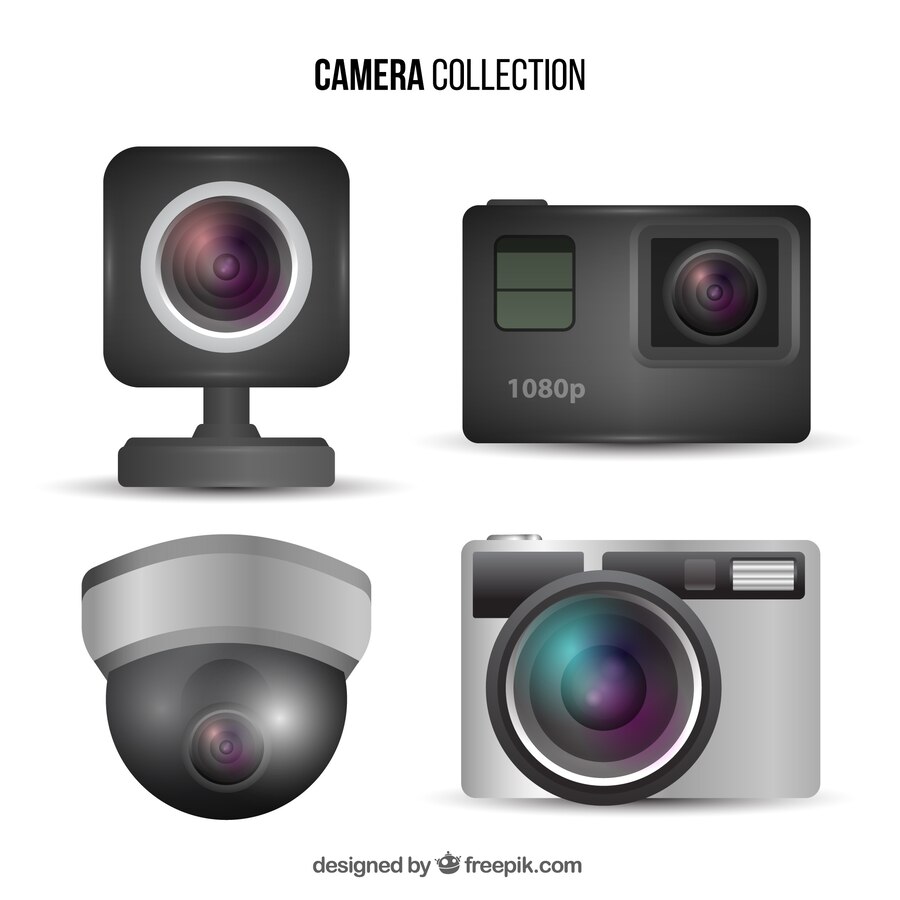
GoPro Hero10 Black
Specifications
Weight: 153g
Resolution: 5.3K, 4K, 2.7K, 60fps, 120fps, 240fps
Battery life: 1.5–2 hours (claimed), dependable battery life for mid-length rides
Today's Best Deals
Reasons to buy
Shares the same powerful processor as the newer Hero11
Better resolution and frame rate than the older Hero9, great for detailed trail shots
Horizon leveling works even at a 45-degree tilt, keeping footage smooth on uneven terrain
Reasons to avoid
It’s now a slightly dated model, with newer options offering more features
The battery can struggle to keep up during longer or colder rides
The GoPro Hero10 Black may be one of the oldest models still available for purchase, but it’s far from outdated. As a former flagship action camera, it continues to offer great features and remains one of the cheapest ways to get reliable performance on the trail. Its 23MP photos, crisp 5.3K video, and smooth 60fps frame rate are more than enough for everyday MTB footage. The sensor and image resolution are the same as the newer Hero11, and you still get access to GoPro’s trusted Hypersmooth 4.0 stabilization, which works beautifully even without the fancier 360-horizon-lock tools.
What really stands out is how durable and trail-ready the Hero10 still feels. While the Enduro battery isn’t included as standard, it’s a low-cost upgrade at just $25 / £25, and it improves both life and cold-weather performance. If you’re not sharing every ride across social media platforms, and just need solid clips and reliable tech, the Hero10 hits a sweet spot in specs vs. price. It’s one of the best budget-friendly cameras out there that doesn’t sacrifice core specs or ruggedness.
Related: Kentucky Ebike Laws
7. Best MTB action camera for hidden mounting

Insta360 Go 3
Specifications
Weight: 35g (Action Pod: 96g)
Resolution: 1536p, 1440p, 1080p, 30fps, 50fps
Battery Life: 45 minutes, with Action Pod: 170 minutes (claimed) battery life
Today's Best Deals
Reasons to buy
Shoots crisp 2.7K video that’s perfect for trail footage
IPX8 rating means it’s fully waterproof up to 16ft, no housing needed
AI-powered editing suite helps create polished clips in less time
No recording limit, so you can capture long rides without interruption
Reasons to avoid
Short battery life if you’re not using the Action Pod
The case isn’t fully waterproof, so it’s not ideal for wet rides
No removable storage, which limits flexibility on longer outings
Lacks external mic support, which can affect audio quality on the trail
The Insta360 Go 3 is a clever update to the brand’s already popular mini action camera, offering a ton of new tech in a body that’s about the size of your thumb. It’s even tinier than most bike lights, yet packs powerful recording capability with 2.7K resolution (or 1536p)—a clear step up from the 1440p max of the older Go 2. Weighing just 9g more, it’s still easy to mount on your helmet or bars without adding bulk. Riders will love how FlowState Stabilization removes shakes, bumps, and rolls, and the added 360 Horizon Lock gives your video that super steady look even on rocky terrain.
What’s more, it’s loaded with smart creative features like Time Shift, Slow Motion, PureShot HDR, Photo, and Timelapse, which make editing easier and more fun. A single press of the front button starts recording, and Voice Control 2.0 lets you go hands-free so your hands can stay on the handlebars. You can tweak your footage using AI-editing tools right from your Android or iOS phone, which makes the whole edit process fast and easy even from the trail.
If you pair it with the Action Pod, you get even more convenience—like a flip-out LED touchscreen, remote preview, and quick menus, plus up to 170 minutes of use. While the Pod is only splashproof (IPX4), the Go 3 itself is waterproof to 16ft (IPX8), so it’s safe for wet conditions or even going underwater. With extra accessories like the Dive Case and Fetch Stick, Insta360’s site gives you lots of ways to get more out of owning this tiny powerhouse.
Related: Iowa Ebike Laws Simplified
8. Best MTB action camera for field of view
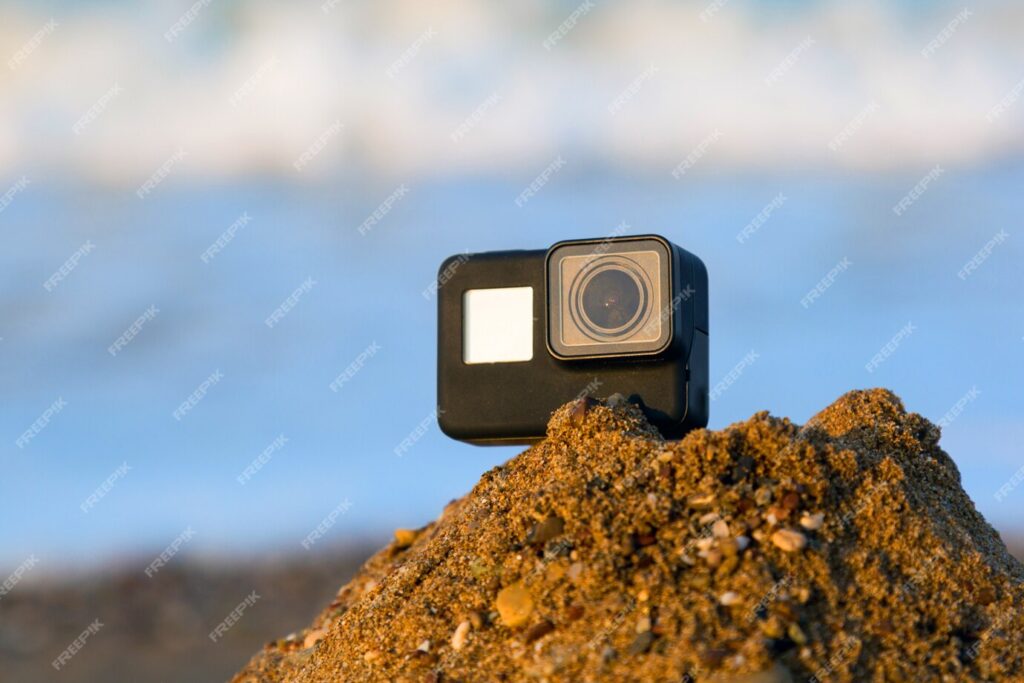
DJI Osmo Action 4
Specifications
Weight: 145g
Resolution: 4K, 2.7K, 1080p, 30fps, 120fps, EIS
Battery life: 160 mins at 1080p/30fps/EIS off (claimed), strong battery life for extended riding sessions
Today's Best Deals
Reasons to buy
Wide 155-degree FOV captures more of the trail in every shot
Excellent stabilization keeps your footage smooth even on rocky rides
Quick and magnetic mounting system makes it easy to swap angles or move between gear
Fast charging reduces latency, so you can spend more time on the trail and less time plugged in.
Reasons to avoid
Battery life could be better, especially for longer rides
Video quality doesn’t quite compete with top-tier GoPro models
Photo mode isn’t the best for still image capture
The DJI Osmo Action 4 is an impressive action camera built for MTB riders who want rich detail and a wide perspective in every shot. It offers one of the widest fields of view available in any standard non-360 camera—an ultra-wide 155 degrees, which feels close to what the human eye naturally sees. This makes it perfect for immersive chest footage, whether you’re climbing or descending. The camera includes front and rear touchscreens, making framing your shot in portrait or landscape orientations quick and easy, even mid-ride. The smooth 4K recording at 120fps captures excellent quality, and the EIS software helps reduce vibrations, especially in good light.
With its magnetic mount, turning the camera on or off is quick and hassle-free — perfect for switching angles or gears on the fly. Whether you’re mounting it on your bike frame or helmet, the flexible mounts let you get the best angle. This camera’s smart features, like reliable stabilization and touchscreen control, give you complete creative control on the go.
9. Best MTB action camera for 4K on a budget
AKASO Brave 7 LE
Specifications
Weight: 127g
Resolution: 4K, 2.7K, 30fps, 60fps
Battery life: not stated, but includes dual battery packs for extended life
Today's Best Deals
Reasons to buy
Affordable price makes it accessible for most mountain bikers
Crisp 4K resolution captures clean and detailed trail footage
Dual touchscreens offer easy control from both the front and back
Reasons to avoid
Shoots 4K video but is limited to only 30fps, which may feel less smooth
Needs an external case to be fully waterproof, unlike other sealed models
Some users report buggy software that affects performance and reliability
The AKASO Brave 7 LE is a solid budget option in the world of action cameras, especially for mountain bikers looking to save money without giving up key features. It comes with dual touchscreen displays—front and rear—and shoots in crisp 4K recording, backed by built-in stabilization that helps smooth out your ride footage. While its spec list tries to compete with more expensive products from GoPro, DJI, and Insta360, the Brave 7 LE clearly undercuts those big players on price, making it an attractive choice for casual riders.
That said, there are some compromises. The image quality and overall performance may not match the absolute best, and the app can feel a bit buggy at times. You’ll also need a waterproof case, which is slightly bulky, unlike newer fully sealed models. Still, if you’re okay with those trade-offs and want something affordable for capturing your mountain biking adventures, this Akaso cam is a smart pick. Even compared to its sibling, the Brave 8, the 7 LE holds its ground as a strong smartphone-friendly option that handles the basics well.
Related: Convert Mountain Bike To Electric
How to choose the best action camera for mountain biking
While each of the top MTB action cameras offers its own unique features that can suit different riders’ preferences, there are a few key traits that they should all share in order to effectively capture your mountain biking adventures.
Ruggedness: Your action camera should be tough enough to survive a drop, crash, or even a splash into water. Look for something solid with proper waterproofing that can handle bad weather and unpredictable terrain. Most cameras built for mountain biking are nearly bombproof—the Insta360 X4 even survived being dropped in a pond by a tester named Graham, proving its rugged performance.
Image stabilization: Smooth footage is key when filming adventure sports like mountain biking. No one wants to watch shaky clips, so image stabilization is a must. A camera with good video quality and features like Hypersmooth 4.0 (like the one in the GoPro Hero 10) will give you watchable, high-quality clips without the wobbles, and at a price that’s often better than newer flagship models.
Mounting system: A great mounting system is essential. Your camera won’t be useful if you can’t fix it securely to your helmet, body, or bike. Most come with some basic accessories, but it helps if there are lots of after-market options too. The DJI Osmo Action 4, for example, has a magnetic mounting system and comes with different mounts so you can easily attach it to various places depending on your setup.
What to look for in the best action camera for mountain biking
What minimum camera resolution should I be looking for?
When choosing the best action camera for mountain biking, it’s easy to assume that higher resolution is always better—but that’s not always the case. Unless you’re watching your footage on a big computer monitor or TV screen, you probably won’t need ultra-sharp playback. You’re unlikely to print a still image from your rolling cam footage to hang as an A3-sized poster on your wall. Most riders simply want a clean view of their ride, whether it’s on a mobile screen or a small GoPro display.
That said, camera technology is moving fast, and recording capabilities are getting more impressive. Many MTB cameras now shoot at 4K, with 60 frames per second becoming standard, and models like the GoPro Hero9 and Hero10 Black push things even higher. If you’re capturing fast, technical trails, having smooth, high-quality video makes a big difference. So while resolution might not be everything, aiming for at least 4K recording is a smart choice.
Why is dynamic range important in an action camera?
When choosing the best action camera for MTB, one of the most crucial things to look at is its dynamic range. This refers to the camera’s ability to capture both the brightest and darkest parts of a scene clearly. Unlike the human eye, which can quickly adjust from sunlight on an open trail to the shade of a deep forest or tight singletrack, a camera depends heavily on its sensor to deliver clear, crisp footage in such changing light. A wider dynamic range means more detail in both highlights and shadows, helping you get high-quality video without losing parts of the image in glare or darkness.
Even if a camera has high resolution or more pixels, it won’t look great unless it can handle varied light and changing tones. Sharp footage comes from how well it records these shifts—not just how many pixels are packed in.
What other features and functions should I consider?
When looking for the best action camera for mountain biking, there are several practical and ergonomic considerations beyond just video quality. You’ll want to know if it’s easy to attach the camera to your helmet, handlebar, or chest mount so it stays secure on rough trail rides. Also, does the camera include image-stabilizing software to keep your footage viewable, even when you’re bouncing through technical terrain that would normally produce shaky, nausea-inducing clips?
Think about how easy it is to operate the camera while wearing gloves—are the buttons big enough, or can you use voice control instead? These small features and functions can make a big difference when you’re out riding.These elements are absolutely essential when choosing the right action cam for MTB use.
What are the differences between fisheye, wide-angle and 360 lenses?
When choosing the best action camera for mountain biking, understanding the type of lens it uses is important. Most brands offer fisheye, wide-angle, or 360 lenses, each designed to capture different types of scenes. A fisheye lens has a curved barrel shape and creates dramatic distortions, giving your footage a more rounded, immersive look. In contrast, a wide-angle lens captures a broader field of view with linear distortion, making it more natural-looking for fast-paced trail filming.
Meanwhile, 360 cameras have made big strides in recent years, offering amazing video quality, dynamic framing, and impressive stabilization for intense moments. They record an entire degree range and let you pick your angle later in post-processing, adding cool effects during editing. The advantages are clear, but there are disadvantages too—like large files, heavy memory usage, and needing strong computing power. Depending on your riding style and what kind of footage you want, each option brings something unique to the table.


